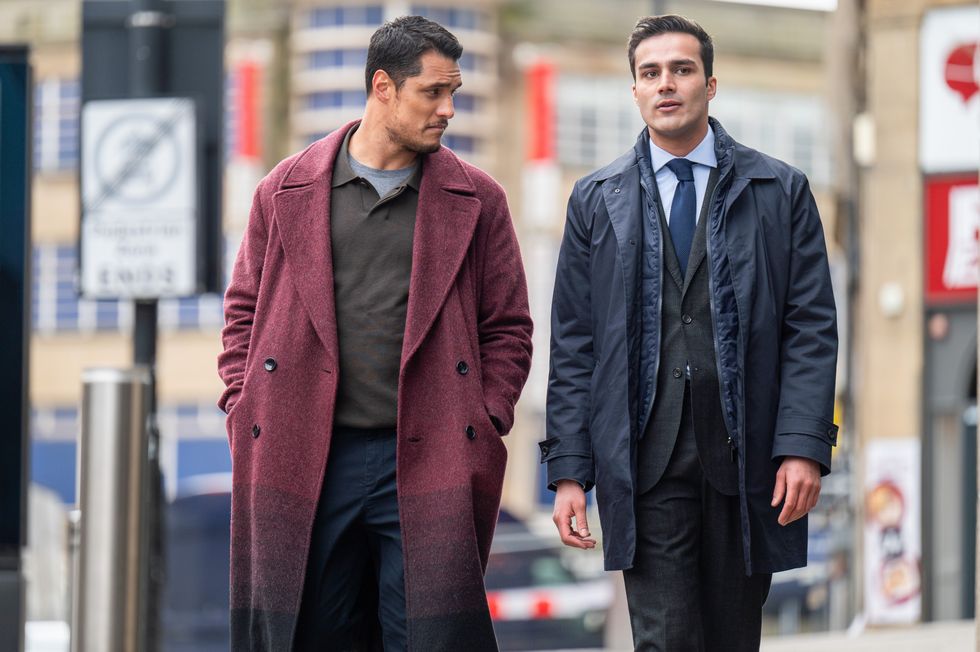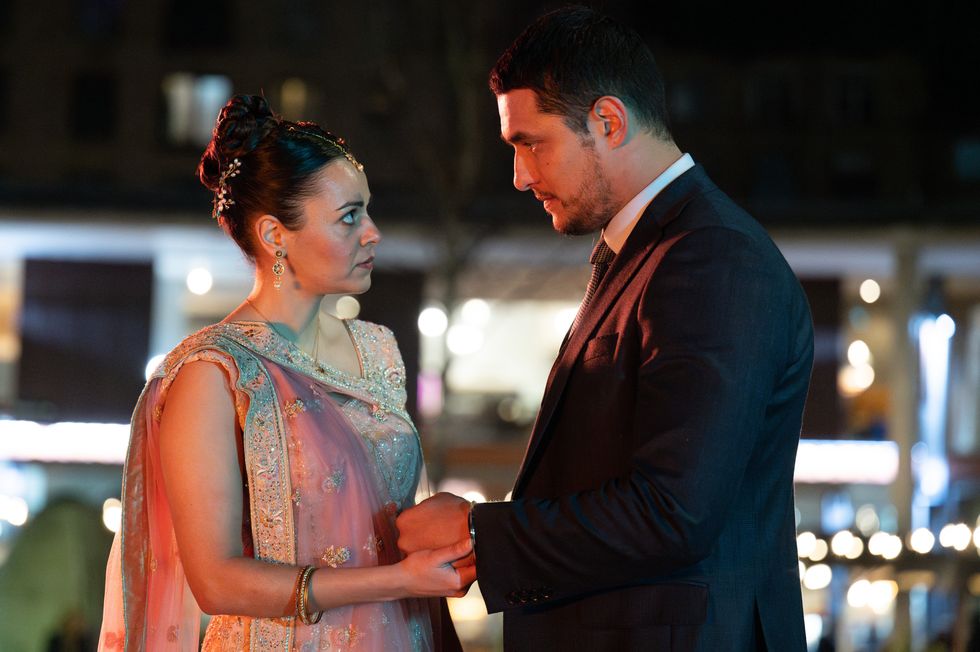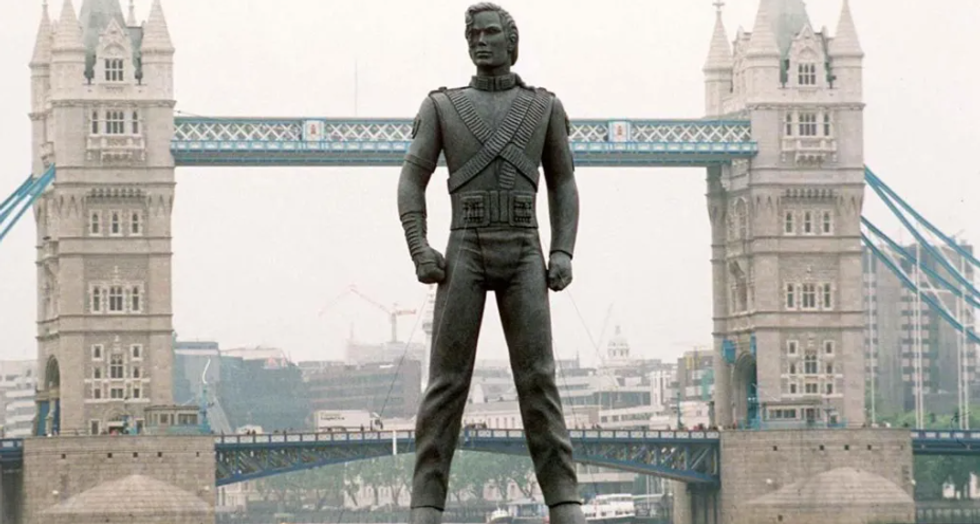THE BBC’s new six-part crime drama, Virdee, which began transmission on Monday (10), is making history as it is the first of its kind, with a diverse British Asian cast. It is also very much author AA Dhand’s baby. The credits state that it was “created and written by AA Dhand”; is “based on City of Sinners by AA Dhand”; and Dhand is also its executive producer, along with Paul Trijbits.
The drama is named after its eponymous hero, Detective Chief Inspector Hardeep Virdee, a clean-shaven Sikh who prefers to be addressed as “Harry”.
He is played by Staz Nair, son of an Indian father “from Aanakkulam near Cochin in Kerala” and a Russian mother. Born in Moscow, he was brought over to the UK when he was two.

Harry’s decision to marry a Muslim has not gone down well with his father. Aysha Kala is very good as Saima Hyatt, as you would expect as she was named best actress in Eastern Eye’s Arts Culture and Theatre Awards (ACTA) last year for her performance in The Motive and the Cue at the National Theatre.
In fact, City of Sinners, set in Bradford – like all the novels featuring Virdee – was nominated in ACTA’s literature category in 2019. Dhand’s time has now come, but it has been a long journey for him to get the premiere the BBC organised for Virdee last Thursday (6) at St George’s Hall in Bradford. Alongside running a pharmacy, he began writing crime fiction in 2006. After 1.1 million words, for which he did not earn a penny, and “66 rejections”, his first Virdee novel, Streets of Darkness, was published in 2016, followed by Girl Zero in 2017, City of Sinners in 2018, and One Way Out in 2019.
Perhaps what Eastern Eye readers will find shocking in the opening episode is not so much the violent drugs war raging between rival gangs in Bradford, but the bigotry shown by Virdee’s father, Ranjit, who has disowned his son for marrying a Muslim (even though he now has a grandson, Aaron).
As both an empathetic mother and mother-inlaw, Sudha Bhuchar has been cast perfectly as Jyoti Virdee. The same goes for Kulvinder Ghir as Virdee’s father.
In 2019, Sudha and Kristine Landon-Smith, founders of the Tamasha Theatre Company, won an ACTA “for outstanding contribution to the creative industry”.
Many Asian viewers will probably consider Virdee’s father to be the real villain in the opening episode. When his estranged son attempts to make peace by visiting him at home for Diwali with food cooked by Saima, he asks Hardeep to go down like a dog and beg for forgiveness. When Hardeep does so, his father pours a bowl of curry over his son’s head. In a city with a serial killer on the loose, that may well turn out to be the most upsetting scene in the whole series.
There is another raw piece of dialogue when a young Indian woman confronts Saima and tells her she knew Harry before he ditched her “for a Paki”. Only Dhand could get away with dialogue like that on prime time TV. It is to Saima’s credit that she – first humiliated by her father-in-law and then by her husband’s ex – retains her poise. She merely tells the foul-mouthed woman that she might have had too much to drink.
There is an amusing exchange when an East European gangster, Novak Rexa (Lewis Goody), fears Virdee might rough him up in order to get information about a missing teenager.
“You can’t do this to me,” protests Novak. “This is England!”
Virdee corrects him: “This is Bradford.” This produced one of the loudest cheers of the evening at the premiere, where cast and crew were invited along with members of the public.
It is the family tensions that set Virdee apart from other crime dramas. Virdee is beholden to Saima’s wealthy brother, Riaz Hyatt (Vikash Bhai), who kept him out of prison at some point in the past. To discover the whereabouts of the missing teenager, Virdee turns to his brother-in-law for help. The only problem is that Riaz himself heads one of Bradford’s most notorious gangs. He owns a country estate with horses grazing in the fields – where the two boys had played as children.
“No bodies,” Virdee tells Riaz.
The latter agrees: “No bodies.”
But the body of Novak, who was being questioned by Riaz’s men, later turns up hanging from a tree.
Virdee has a junior partner, DSI Amin (Danyal Ismail).

Bradford, where Dhand has grown up and where he feels most at home, is very much a character in the drama. A quarter of its population is from the ethnic minorities. Virdee has been shot in Bradford in such locations as City Park, Lister Park, Little Germany and the disappearing Kirkgate market, where the author spent his youth. Dhand relaxes by walking in the woods around Bradford. He considers himself a creature of the night, preferring Bradford after dark.
Virdee opens with a “Bond-esque” chase across Bradford at night.
“I like working at night time, like walking at night, like driving at night,” Dhand told Eastern Eye.
Unlike Agatha Christie, who acquired her knowledge of poisons after working in a pharmacy, Dhand learnt about crime growing up in council property near Holme Wood, “the largest council estate in Europe”.
“If you grew up in a tough environment in a tough estate, you learnt about criminality,” he recalled. “There were no other brown people.”
As far as he was concerned, said Dhand, “Virdee is not an Asian crime drama – it’s a crime drama with a diverse cast. It’s heightened, elevated crime drama about murder, drugs, universal things that we’ve seen in crime dramas before. I call him ‘Harry’ (instead of Hardeep) because I was inspired by the dirty Harrys of this world when I was growing up. I don’t want it to be a south Asian crime drama. I want it to be a crime drama that encompasses the south Asian world.”
Luther, starring Idris Elba, is not seen as a black crime drama, he pointed out.

Virdee’s lead actor, Nair, has been searching for his Indian roots. Like his protagonist character in the drama, who was disowned by his family, Nair, too, was estranged from his father for 25 years. He has seen being involved in Virdee as “a unique opportunity to find my own relationship with my culture”.
Kala, meanwhile, talked about playing Saima, a nurse who saves the life of her father-in law when he is brought into hospital after suffering a heart attack. He is unaware that the woman he is praising to his wife is actually the daughter-in-law he has abused and rejected.
“Her religion is important to her, but it didn’t become her defining character,” said Kala. “I feel sometimes when we talk about religion and culture, especially in south Asian characters, it becomes the only thing they’re known for.
“Yes, Saima is a Muslim woman, but it’s just part of her character.”
Virdee is on BBC 1 on Mondays at 9pm and on iPlayer.
















 The Story Teller by Ley Roberts
The Story Teller by Ley Roberts Summer Exhibition coordinator Farshid Moussavi, with Royal Academy director of exhibitions Andrea Tarsia in the background
Summer Exhibition coordinator Farshid Moussavi, with Royal Academy director of exhibitions Andrea Tarsia in the background An installation by Ryan Gander
An installation by Ryan Gander A sectional model of DY Patil University Centre of Excellence, Mumbai, by Spencer de Grey
A sectional model of DY Patil University Centre of Excellence, Mumbai, by Spencer de Grey Rituals and Identity and Theatre of Resistance by Arinjoy Sen
Rituals and Identity and Theatre of Resistance by Arinjoy Sen
 The statues were the product of a transatlantic effortGetty Iamges
The statues were the product of a transatlantic effortGetty Iamges
 The 50 digital paintings showcase a blend of cosmology and Indian classical musicThe Bhavan
The 50 digital paintings showcase a blend of cosmology and Indian classical musicThe Bhavan
 Deccan Miniature Images - Gold Cows on red getty images
Deccan Miniature Images - Gold Cows on red getty images Pastel Lotus getty images
Pastel Lotus getty images Krishna as Govindagetty image
Krishna as Govindagetty image Greyscale Pichvais
Greyscale Pichvais  Sketches
Sketches  Modern Cow Pastel
Modern Cow Pastel Sketches
Sketches  Pichvai gifted to Narendra Modi
Pichvai gifted to Narendra Modi  Black and gold Gopis
Black and gold Gopis  The Haveli of Shrinathji
The Haveli of Shrinathji